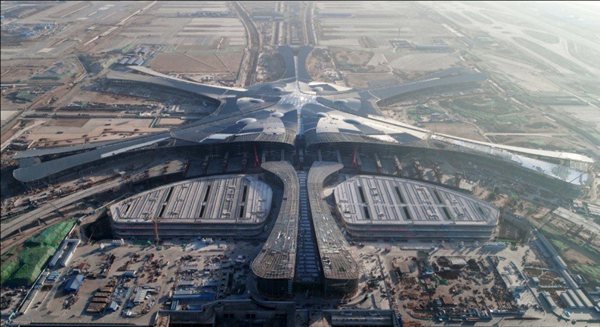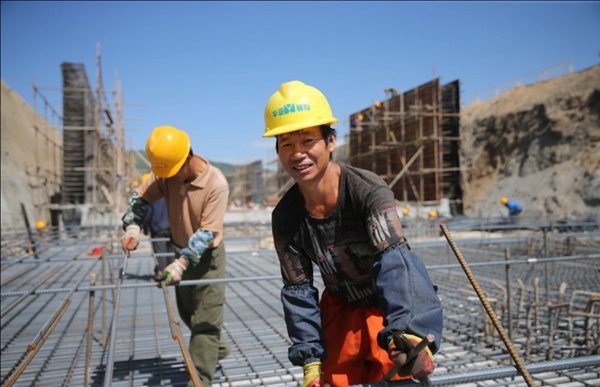

A seventh ring road will be completed at the end of June and is expected to further integrate Beijing and neighboring Hebei Province.

Photo taken shows Beijing’s new airport under construction. (Photo by Lei Sheng from People’s Daily)
The ring-shaped road will have a total length of 940 kilometers, including 90 kilometers in Beijing and 850 kilometers, or 90 percent, in Hebei.
Beijing has no first ring road. As Beijing’s sixth orbital, the new one will help ease the freight transport burden on the sixth ring road.
More importantly, it will propel the integration of the highway network of the Beijing-Tianjin-Hebei region, advance formation of an one-hour and half-hour commutes between central cities and peripheral cities in the region.
Having 2.3 percent of the country’s land area and 8 percent of the national population, the Beijing-Tianjin-Hebei region is one of the most vigorous economic zones in the country. In 2016, the region contributed 10 percent to the country’s GDP.

Photo taken in August shows a construction site for the extension of the Beijing-Zhangjiakou railway to Hebei's Chongli district where most of the skiing events of the 2022 Winter Olympic Games will be held. The rail link is part of the intercity railway network in the Beijing-Tianjin-Hebei region. (Photo by Guo Junfeng from CFP)
Uneven development has constrained the region’s growth. Beijing is confronted with “big city diseases” including a water shortage and overpopulation approaching the ceiling set by the government. Compared to Beijing and Tianjin, the small and medium-sized cities around Beijing and Tianjin lag behind economically.
Coordinated development for Beijing-Tianjin-Hebei Region is planned by authorities to address the challenges, with construction of transport facilities one of the important tasks in realizing that goal.
According to the development roadmap, the region will build a world-class city cluster with Beijing at the core by improving the road transportation network, building modern airport and port clusters, optimizing transportation capacity and accelerating modernization of transport services.
 Fire brigade in Shanghai holds group wedding
Fire brigade in Shanghai holds group wedding Tourists enjoy ice sculptures in Datan Town, north China
Tourists enjoy ice sculptures in Datan Town, north China Sunset scenery of Dayan Pagoda in Xi'an
Sunset scenery of Dayan Pagoda in Xi'an Tourists have fun at scenic spot in Nanlong Town, NW China
Tourists have fun at scenic spot in Nanlong Town, NW China Harbin attracts tourists by making best use of ice in winter
Harbin attracts tourists by making best use of ice in winter In pics: FIS Alpine Ski Women's World Cup Slalom
In pics: FIS Alpine Ski Women's World Cup Slalom Black-necked cranes rest at reservoir in Lhunzhub County, Lhasa
Black-necked cranes rest at reservoir in Lhunzhub County, Lhasa China's FAST telescope will be available to foreign scientists in April
China's FAST telescope will be available to foreign scientists in April "She power" plays indispensable role in poverty alleviation
"She power" plays indispensable role in poverty alleviation Top 10 world news events of People's Daily in 2020
Top 10 world news events of People's Daily in 2020 Top 10 China news events of People's Daily in 2020
Top 10 China news events of People's Daily in 2020 Top 10 media buzzwords of 2020
Top 10 media buzzwords of 2020 Year-ender:10 major tourism stories of 2020
Year-ender:10 major tourism stories of 2020 No interference in Venezuelan issues
No interference in Venezuelan issues
 Biz prepares for trade spat
Biz prepares for trade spat
 Broadcasting Continent
Broadcasting Continent Australia wins Chinese CEOs as US loses
Australia wins Chinese CEOs as US loses